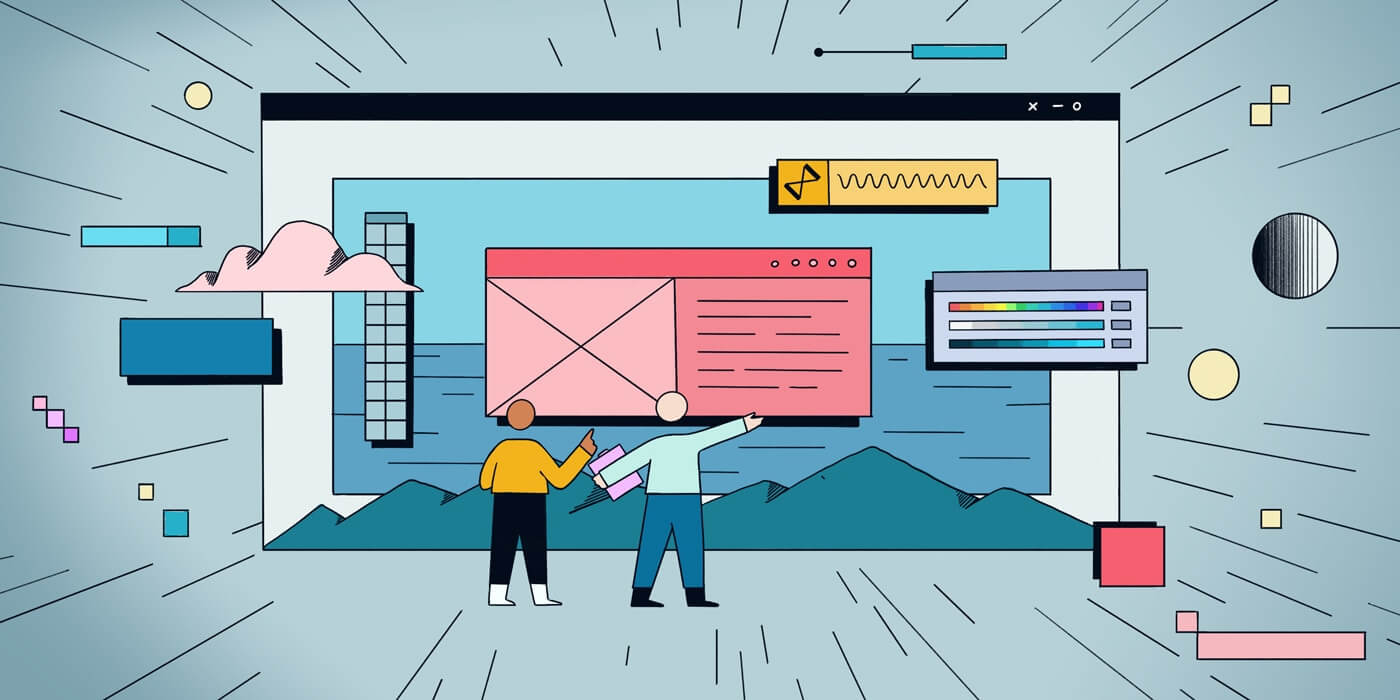Over the last decade, we’ve been lucky to create compelling content for organizations of all sizes, from all industries. In that time, we’ve made a few mistakes, learned a few lessons, and figured out what elements will make or break a creative project. So we can say definitively that one of the biggest factors that influences a project’s success is the relationship between client and content agency.
Good work starts with a good working relationship, but when a content agency and a client aren’t aligned, things can go off the rails pretty quickly. Worse, it isn’t always a huge dramatic problem that derails a project. It’s often a little miscommunication or a lack of education that causes frustration.
We consider our clients to be our true creative partners, so we feel it’s our duty to cultivate a strong, healthy, and happy relationship from day one. While we can’t control everything, over the years we’ve found a few things (both big and small) that have helped drastically improve communication, increase transparency, and strengthen our relationship with our clients.
Today we thought we’d share a few of them. Whether you’re on the client side or the content agency side, we hope you’ll find them helpful.
How to Keep Your Content Agency and Clients Aligned
Every engagement is unique, but these widespread practices ensure everyone is happy and on the same page throughout the creative process.
1) Video Kick-Off Calls
In an ideal world, a client and content agency could meet-and-greet in person, but it usually doesn’t work that way. Our clients have full schedules, as do our employees, and we’re often not even in the same time zone, so we start with video kick-off calls.
While a conference call works, we’ve found that a video kick-off is really the most effective way to introduce ourselves for several reasons:
- It’s more personable. We get to see each other and put a name to the face. This establishes a friendly relationship from the get-go (as opposed to communicating with someone who is basically just an email address). It also helps us get a sense of who they are and how they work.
- It makes body language clear. When we can see each other, we can tell if someone is confused about a concept, or fatigued by a long-winded answer. This helps us navigate the conversation more effectively.
- It makes things less awkward. We want clients to be as comfortable as possible, especially during the “getting to know you” stage. When they can see us, they feel more comfortable. It also helps the conversation flow more freely. (There are fewer awkward silences and fewer people apologizing when they all start to talk over each other.)
Above all, we want to be respectful of our clients’ time. Using video helps us do that.
2) Roadmapping
Earlier this year our agency completely changed our production process, moving toward a more Agile-inspired method that has improved our communication, efficiency, and efficacy. Roadmaps were a big addition to this process.
Roadmaps are basically a detailed visual that outlines every part of the project, including what to expect in the process, risks to mitigate, and other such things. Walking through a roadmap up top provides clarity and transparency into the process and helps us address potential issues before they become bigger problems down the road. Our clients appreciate this level of detail, and it helps them feel invested in the project.
3) Detailed Timelines
In creative work, timelines are everything. But timelines can look very different to different people. What is a real deadline, and what is movable? What is expected at each stage?
We craft detailed timelines that clearly outline what will be delivered, when, and what we need from our clients to keep the process moving at each stage. This has drastically improved our process, ensuring that nothing gets bottlenecked or back burnered.
4) Inspiration Examples
Some of our clients have been doing content marketing for a decade; others are investing in their first infographic. Regardless, we want them to feel comfortable and confident that we share the same vision and are aligned creatively.
We know firsthand that it can be difficult to articulate the vision in your head, so when we start a creative engagement, we often provide inspiration examples early and often. We also encourage clients to share any and all inspiration they come across, whether it’s images, moodboards, a piece of music, or even a whiskey label. The goal of any engagement is to find the best creative solution, so we appreciate anything that helps fast-track those conversations.
5) Feedback Requests
Feedback is a crucial part of the creative process, but there is a difference between constructive feedback and disruptive feedback. Getting major copy changes at a final design stage (or getting illustration notes once a motion graphic has moved into the animation stage) is not just frustrating. It wastes a lot of time, money, and resources
To improve communication, we incorporate feedback rounds into our detailed timelines. That way everyone knows what specific feedback is desired at each stage, and clients can ensure that all stakeholders have given their feedback. (We also ask them to discuss the content among themselves first, then consolidate feedback.) This saves time and helps us ensure all feedback is incorporated in subsequent rounds.
6) Live Presentations of Creative
We approach content as a communication problem that needs to be solved. Thus, we think deeply and strategically about what creative approach will solve the problem most effectively. In other words, there’s a method to our madness. So when we present creative, we find it helpful to walk clients through the work personally. (It’s a lot better than just emailing them a rough draft and telling them to “let us know” what they think.)
Walking them through helps us have a dialogue, explain our thinking, address concerns, solicit feedback, and go from there. This is the key to making our clients feel happy and confident in our creative execution.
7) General Client Education
We have a team of experts who can produce all types of creative content, from infographics and e-books to interactive and video. That said, we realize that some things that are common knowledge to us can be bewildering to our clients, and this lack of understanding can cause problems down the line.
That’s why we focus on as much client education as we can up front. That means walking them through our creative process, clarifying the deliverable (e.g., a landing page or a full website), explaining terminology, and setting expectations. The more we do that, the better our work and our working relationship.
At the end of the day, it’s our client relationships that matter most, so everything we do is intended to feed those.
How We Grow Relationships
We do our best work when we have healthy, respectful, and collaborative working relationships with clients (and each other), so we try to cultivate those relationships from day one, whether it’s a one-off project or recurring engagement. In addition to the practices we’ve covered here, we’ve also found a few other proactive ways to cultivate better relationships, which might help you too.
- Learn about the 4 types of creative thinkers. Different minds contribute differently and communicate in specific ways. Understanding your own type (and others) can help you collaborate much more effectively.
- Follow these tips if you work remotely. When you’re working with people in different offices, these tips can help you make sure nothing falls through the cracks.
- Try these techniques to collaborate with your content agency. These simple tricks will ensure you get the most from your relationship.
If you want to see our creative minds at work, holler at us. We’d love to collaborate with you.




